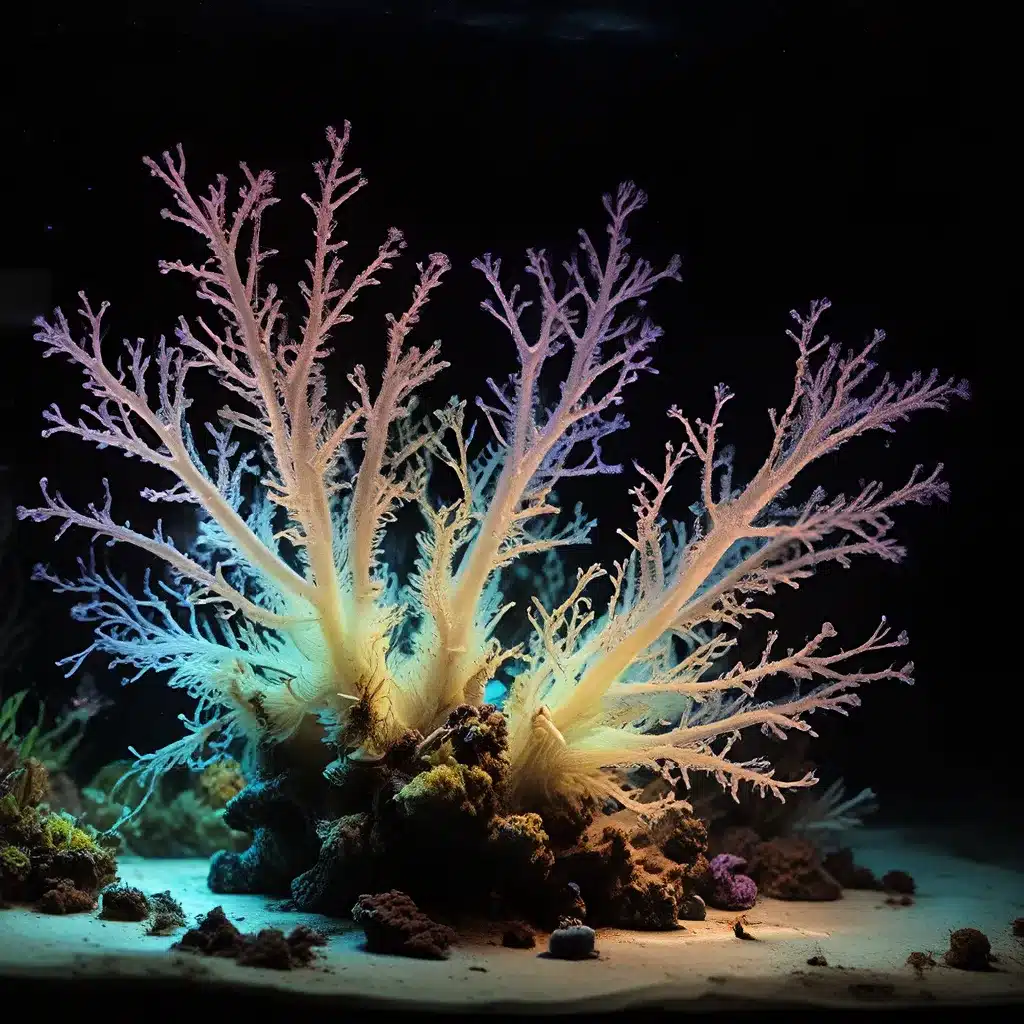
Unlocking the Secrets of Aquatic Light Shows
The natural world is full of remarkable phenomena, and one of the most captivating is the mesmerizing glow of bioluminescence. This remarkable ability to produce light through a chemical reaction is not just limited to the terrestrial realm; it is also a fascinating feature of many aquatic organisms. As aquarium enthusiasts, we have the opportunity to witness these living light shows up close and personal, but understanding the mechanisms behind this natural wonder can deepen our appreciation and inspire more effective aquarium management.
The Science Behind Bioluminescence
Bioluminescence is the result of a chemical reaction that occurs within certain organisms, primarily marine life. This reaction involves two key components: a light-emitting molecule called luciferin and an enzyme called luciferase. When these two substances come into contact, they trigger a chemical reaction that produces a glowing effect. Researchers have discovered that the precise trigger for this reaction is the application of a minimum force of seven micronewtons, equivalent to the weight of an ant resting on the skin. This remarkable sensitivity allows these organisms to use bioluminescence as a defense mechanism, signaling to predators or attracting the attention of their own predators.
Dinoflagellates, a type of single-celled algae, are particularly well-known for their bioluminescent displays. These microscopic organisms can congregate in large blooms, creating the mesmerizing “red tides” that are often associated with bioluminescence. When the waves break or the water is disturbed, the mechanical force triggers the bioluminescent reaction, resulting in a dazzling display of blue-green lights. This phenomenon is not only visually stunning but also serves an important ecological purpose, as the flashing lights can deter predators and attract the attention of larger predators that may prey on the dinoflagellates’ predators.
Incorporating Bioluminescence into the Aquarium
While the natural world is home to a vast array of bioluminescent organisms, the aquarium hobbyist has the unique opportunity to bring some of this magic into the home environment. One of the most captivating examples is the inclusion of bioluminescent corals, such as the stunning Discosoma species, which can emit a mesmerizing glow when exposed to the right lighting conditions.
To create an optimal environment for bioluminescent corals, aquarists must pay close attention to water quality, lighting, and flow. Maintaining stable water parameters, such as temperature, pH, and nutrient levels, is crucial for the health and well-being of these delicate organisms. Additionally, the right lighting setup, including the use of actinic bulbs or LEDs, can stimulate the bioluminescent reaction and showcase the natural light show.
Careful consideration of water flow is also essential, as the mechanical stimulation triggers the bioluminescent response. Aquarists can create specific water movement patterns, such as gentle wave-like motions, to mimic the natural conditions that elicit bioluminescence in the wild. This attention to detail not only enhances the visual appeal of the aquarium but also supports the long-term health and well-being of the bioluminescent organisms.
Expanding the Bioluminescent Aquarium
While bioluminescent corals are a captivating focal point, the realm of bioluminescent aquarium inhabitants extends far beyond these vibrant invertebrates. Many deep-sea creatures, such as certain species of fish, squid, and other invertebrates, possess the ability to produce their own light. Incorporating these bioluminescent wonders into the aquarium can create a truly mesmerizing and immersive experience for hobbyists.
One such example is the mesmerizing Atolla jellyfish, a deep-sea denizen known for its stunning bioluminescent displays. When threatened, these jellyfish can emit a brilliant ring of light, a behavior that has captivated researchers and aquarium enthusiasts alike. Advances in aquarium technology and husbandry techniques have made it possible to maintain these delicate creatures in captivity, allowing aquarists to witness their natural light shows up close.
Similarly, the inclusion of bioluminescent fish, such as certain lanternfish or flashlight fish, can add an extra layer of fascination to an aquarium setup. These mesmerizing creatures use their bioluminescent abilities for a variety of purposes, including communication, mating, and predator avoidance. By carefully replicating the environmental conditions these fish require, aquarists can create a captivating display that showcases the wonders of marine bioluminescence.
Sustainability and Conservation Considerations
As aquarium hobbyists, we have a responsibility to ensure that our pursuit of these bioluminescent marvels is conducted in a sustainable and ethical manner. Concerns have been raised about the potential impact of deep-sea mining and other human activities on the delicate ecosystems that house many bioluminescent species. It is crucial that we stay informed about conservation efforts and support initiatives that protect these fragile habitats.
Moreover, the acquisition of bioluminescent organisms for the aquarium trade must be handled with the utmost care and consideration. Responsible aquarists should seek out reputable suppliers who prioritize sustainable collection practices and ensure the long-term well-being of the animals in their care. By supporting ethical and environmentally conscious aquarium practices, we can enjoy the mesmerizing beauty of bioluminescence while contributing to the preservation of these remarkable natural wonders.
Conclusion: Embracing the Magic of Bioluminescence
The world of bioluminescence is a captivating and awe-inspiring realm that holds a wealth of beauty and mystery. As aquarium enthusiasts, we have the unique opportunity to witness these living light shows firsthand, unlocking the secrets of how these remarkable organisms produce their own illumination. By understanding the underlying science, tailoring our aquarium setups to accommodate bioluminescent species, and embracing sustainable practices, we can create enchanting underwater worlds that showcase the magic of nature’s living lights. So let us dive into the wonders of marine bioluminescence and immerse ourselves in the mesmerizing glow of these aquatic marvels.

